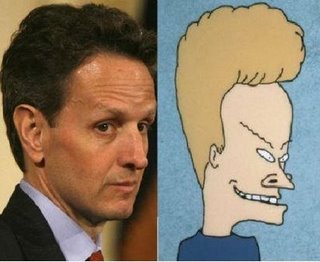The Dimon Dog has been eating crow for the past few days, following a very public humiliation. The outspoken critic of the Dodd-Frank Wall Street Reform and Consumer Protection Act found himself explaining a $2 billion loss sustained by his firm, JPMorgan Chase, as a result of involvement in the very type of activity the Act’s “Volcker Rule” was intended to prevent. Financial industry lobbyists have been busy, frustrating regulatory attempts to implement Dodd-Frank’s provisions which call for stricter regulation of securities trading and transactions involving derivatives. Appropriately enough, it was an irresponsible derivatives trading strategy which put Jamie Dimon on the hot seat. The widespread criticism resulting from this episode was best described by Lizzie O’Leary (@lizzieohreally) with a single-word tweet: Dimonfreude.
The incident in question involved a risky bet made by a London-based trader named Bruno Iksil – nicknamed “The London Whale” – who works in JP Morgan’s Chief Investment Office, or CIO. An easy-to-understand explanation of this trade was provided by Heidi Moore, who emphasized that Iksil’s risky position was no secret before it went south:
Everyone knew. Thousands of people. Iksil’s bets have been well known ever since Bloomberg’s Stephanie Ruhle broke the news in early April. A trader at rival bank, Bank of America Merrill Lynch wrote to clients back then, saying that Iksil’s huge bet was attracting attention and hedge funds believed him to be too optimistic and were betting against him, waiting for Iksil to crash. The Wall Street Journal reported that the Merrill Lynch trader wrote, “Fast money has smelt blood.”
When the media, analysts and other traders raised concerns on JP Morgan’s earnings conference call last month, JP Morgan CEO Jamie Dimon dismissed their worries as “a tempest in a teapot.”
Dimon’s smug attitude about the trade (prior to its demise) was consistent with the hubris he exhibited while maligning Dodd-Frank, thus explaining why so many commentators took delight in Dimon’s embarrassment. On May 11, Kevin Roose of DealBook offered a preliminary round-up of the criticism resulting from this episode:
In a research note, a RBC analyst, Gerard Cassidy, called the incident a “hit to credibility” at the bank, while the Huffington Post’s Mark Gongloff said, “Funny thing: Some of the constraints of the very Dodd-Frank financial reform act Dimon hates could have prevented it.” Slate’s Matthew Yglesias pointed back to statements Mr. Dimon made in opposition to the Volcker Rule and other proposed regulations, and quipped, “Indeed, if only JPMorgan were allowed to run a thinner capital buffer and riskier trades. Then we’d all feel safe.”
Janet Tavakoli pointed out that this event is simply the most recent chapter in Dimon’s history of allowing the firm to follow risky trading strategies:
At issue is corporate governance at JPMorgan and the ability of its CEO, Jamie Dimon, to manage its risk. It’s reasonable to ask whether any CEO can manage the risks of a bank this size, but the questions surrounding Jamie Dimon’s management are more targeted than that. The problem Jamie Dimon has is that JPMorgan lost control in multiple areas. Each time a new problem becomes public, it is revealed that management controls weren’t adequate in the first place.
* * *
Jamie Dimon’s problem as Chairman and CEO–his dual role raises further questions about JPMorgan’s corporate governance—is that just two years ago derivatives trades were out of control in his commodities division. JPMorgan’s short coal position was over sized relative to the global coal market. JPMorgan put this position on while the U.S. is at war. It was not a customer trade; the purpose was to make money for JPMorgan. Although coal isn’t a strategic commodity, one should question why the bank was so reckless.
After trading hours on Thursday of this week, Jamie Dimon held a conference call about $2 billion in mark-to-market losses in credit derivatives (so far) generated by the Chief Investment Office, the bank’s “investment” book. He admitted:
“In hindsight, the new strategy was flawed, complex, poorly reviewed, poorly executed, and poorly monitored.”
At The New York Times, Gretchen Morgenson focused on the karmic significance of Dimon’s making such an admission after having belittled Paul Volcker and Dallas FedHead Richard Fisher at a party in Dallas last month:
During the party, Mr. Dimon took questions from the crowd, according to an attendee who spoke on condition of anonymity for fear of alienating the bank. One guest asked about the problem of too-big-to-fail banks and the arguments made by Mr. Volcker and Mr. Fisher.
Mr. Dimon responded that he had just two words to describe them: “infantile” and “nonfactual.” He went on to lambaste Mr. Fisher further, according to the attendee. Some in the room were taken aback by the comments.
* * *
The hypocrisy is that our nation’s big financial institutions, protected by implied taxpayer guarantees, oppose regulation on the grounds that it would increase their costs and reduce their profit. Such rules are unfair, they contend. But in discussing fairness, they never talk about how fair it is to require taxpayers to bail out reckless institutions when their trades imperil them. That’s a question for another day.
AND the fact that large institutions arguing against transparency in derivatives trading won’t acknowledge that such rules could also save them from themselves is quite the paradox.
Dimon’s rant at the Dallas party was triggered by a fantastic document released by the Federal Reserve Bank of Dallas on March 21: its 2011 Annual Report, featuring an essay entitled, “Choosing the Road to Prosperity – Why We Must End Too Big to Fail – Now”. The essay was written by Harvey Rosenblum, the head of the Dallas Fed’s Research Department and the former president of the National Association for Business Economics. Rosenblum’s essay provided an historical analysis of the events leading up to the 2008 financial crisis and the regulatory efforts which resulted from that catastrophe – particularly the Dodd-Frank Act.
With his own criticism of Dimon’s attitude, Robert Reich invoked the position asserted by the Dallas Fed:
And now – only a few years after the banking crisis that forced American taxpayers to bail out the Street, caused home values to plunge by more than 30 percent, pushed millions of homeowners underwater, threatened or diminished the savings of millions more, and sent the entire American economy hurtling into the worst downturn since the Great Depression – J.P. Morgan Chase recapitulates the whole debacle with the same kind of errors, sloppiness, bad judgment, and poorly-executed and excessively risky trades that caused the crisis in the first place.
In light of all this, Jamie Dimon’s promise that J.P. Morgan will “fix it and move on” is not reassuring.
The losses here had been mounting for at least six weeks, according to Morgan. Where was the new transparency that’s supposed to allow regulators to catch these things before they get out of hand?
* * *
But let’s also stop hoping Wall Street will mend itself. What just happened at J.P. Morgan – along with its leader’s cavalier dismissal followed by lame reassurance – reveals how fragile and opaque the banking system continues to be, why Glass-Steagall must be resurrected, and why the Dallas Fed’s recent recommendation that Wall Street’s giant banks be broken up should be heeded.
At Salon, Andrew Leonard focused on the embarrassment this episode could bring to Mitt Romney:
Because if anyone is going to come out of this mess looking even stupider than Jamie Dimon, it’s got to be Mitt Romney – the presidential candidate actively campaigning on a pledge to repeal Dodd-Frank.
Perhaps Mr. Romney might want to consider strapping The Dimon Dog to the roof of his car for a little ride to Canada.



